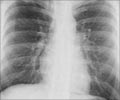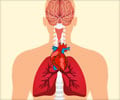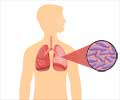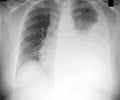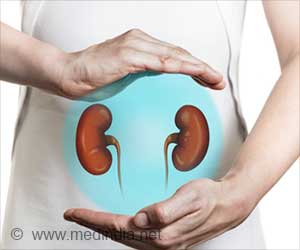- Tuberculosis (TB) is one of the world’s deadliest infectious killers that costs the life of 3 people every minute
- World TB Day strives to build public awareness of the global epidemic of tuberculosis and drives the efforts to eliminate the disease
- With the 2021 theme, The Clock Is Ticking! The World TB Day campaign for action calls everyone to join the venture against eradicating TB from the world
Each day, nearly 4000 die from TB, and around 28,000 people fall ill with this preventable and curable disease. Global efforts to combat tuberculosis have saved an estimated 63 million lives since the year 2000.
Read More..
World TB Day 2021 Theme: #The Clock is Ticking
The theme of World TB Day 2021 is ‘The Clock is Ticking’ that concentrates on the view that the world is running out of time to act on the commitments to end TB, once made by global leaders.The End TB progress is critically held at risk amidst the context of the COVID-19 pandemic.
Negative impacts of COVID-19 on TB are observed in high-burden countries with limited testing, under diagnosis and delayed treatment.
It is reported that the findings of an ongoing assessment of the impact of COVID-19 on TB services and spread in the European Region will be ready in Spring 2021. Also, in 2021, the Stop TB Partnership (a network of organizations and countries fighting TB) sounds the alarm on one of the world’s leading infectious killers.
Globally 1 in 4 people have latent TB infection. Thus, to ensure equal access to prevention and care in line with WHO’s drive towards attaining Universal Health Coverage against TB, measures must be taken to #EndTB by 2030, #TheClockIsTicking to reach the #TBTargets2022.
Several organizations and the CDC and its domestic and international partners include the National TB Controllers Association external icon, Stop TB USA external icon, We Are TB external icon, the TB Community Engagement Network external icon, and the global Stop TB Partnership external icon, are contributing to eliminate this deadly disease.
World TB Day – History!
World TB Day is one of the official global public health campaigns by the World Health Organization (WHO), which was marked in 1882 when Dr. Robert Koch proclaimed that he had discovered the bacterium that causes TB. This opened the way towards diagnosing and curing this disease.In 1982, as a frame of a year-long centennial pulls towards Robert Koch's presentation, the International Union Against Tuberculosis and Lung Disease (IUATLD) and the World Health Organization proposed that 24 March be declared as official World TB Day under the theme "Defeat TB: Now and Forever.”
WHO in 1997 declared DOTS as the biggest health breakthrough of the decade that would save many lives.
Tuberculosis (TB) – The Deadliest Killer
Despite being largely curable and preventable, TB costs the life of an estimated 2.9 million people, and 10 million people were reported to have been fallen ill with TB in 2019. It is a contagious infection that is caused by a specific type of bacteria called Mycobacterium tuberculosis. It mainly attacks the lungs but may also spread to other parts of the body, such as the brain and spine.WHO’s End TB Strategy envisions a 90% reduction in TB incidence and a 95% reduction in TB deaths by 2035, and the Declaration adopted by the United Nations General Assembly in September 2018 at the High-Level Meeting on the Fight against Tuberculosis commits to diagnosing and treating 40 million people with TB by 2022. This mandates an urgent requirement to expand strategies to enhance the early diagnosis and initiation of care for people with TB in achieving ambitious targets of exterminating TB.
Screening for TB Disease
WHO encourages everyone to join hands in the 2021 theme “The clock is ticking” with a note that it’s time to keep the promises made by global leaders in eradicating the disease and #EndTB .Misdiagnosis and delayed care set the main burden towards the fight against this infectious disease. Updated evidence-based recommendations and implementation aids, including screening algorithms and web-based tools, are provided by the WHO to help countries conduct strategic TB screening interventions and find all people with TB.
This includes systematic screening for TB disease that may be conducted in epidemic areas with an estimated TB prevalence of 0.5% or higher. These include urban poor communities, homeless communities, and communities in remote or isolated areas, indigenous populations, migrants, refugees, internally displaced persons, and other vulnerable or marginalized groups with limited access to health care.
Reduced TB Mortality
The regional TB mortality has shown a declining graph of 9.4% between 2018 and 2019. This portrays a notably higher than the average global decline in TB mortality (3.7%) and enough to have reached the End TB Strategy milestone of a 35% reduction by 2020 compared to 2015.Tuberculosis (TB) burden in the WHO European Region is said to be decreasing. It is down 19% overall for 2015-2019, as per the latest WHO/European Centre for Disease Prevention and Control (ECDC) report Tuberculosis surveillance and monitoring in Europe 2021 (2019 data).
"The decline of tuberculosis in recent years is positive news. But TB continues to be a threat to some regions in the EU and continues to affect the most vulnerable in our society. We know that there is still more work to do. Together with our agencies, the Commission is committed to playing its part to eliminate TB through, in part, funding, research, and the fight against antimicrobial resistance. Prevention, early diagnosis, and access to treatment and care will also play key roles in this regard", says Stella Kyriakides, European Commissioner for Health and Food Safety.
Halt the Spread of TB
Like other health conditions, “Prevention (of TB) is always better than a cure”. TB bacteria remain in the body unless killed with the right medication.Tuberculosis most generally affects people with immune compromised states such as those having HIV infection, pre-existing morbid health conditions (diabetes or cancer), and young children or not treated for TB in the past.
Certain measures that can be put in place to reduce the spread of the illness include the following:
- Ensure administration of the BCG vaccination (Bacille Calmette-Guérin, a live vaccine against tuberculosis).
- The vaccine is 80% effective in preventing TB for 15 years.
- Tuberculosis infected persons may spread the disease to 10–15 other people per year.
- Thus, early diagnosis and treatment serve as the most effective way against the spread of tuberculosis.
- Breaking the chain of the spread of TB relies upon finding and treating people with the illness and preventing them from passing it on to others.
- Fostering awareness on TB with outreach programs and dedicated volunteers who help screen and diagnose the communities with high rates of TB curbs the spread of the disease.
- The prime measure of all is having a healthy immune system. It is the best form of defense against TB that can completely kill TB bacteria. So stay healthy!
References:
- World Tuberculosis Day 2021 - (https://www.who.int/campaigns/world-tb-day/world-tb-day-2021)
- 24 March 2021 World Tuberculosis Day - (https://www.paho.org/en/campaigns/world-tuberculosis-day-2021)
- World TB Day 2021 - (https://www.cdc.gov/tb/worldtbday/default.htm)
- Prevention - (https://www.tbalert.org/about-tb/what-is-tb/prevention/)
- World TB Day - (http://www.stoptb.org/events/world_tb_day/)
Source-Medindia




